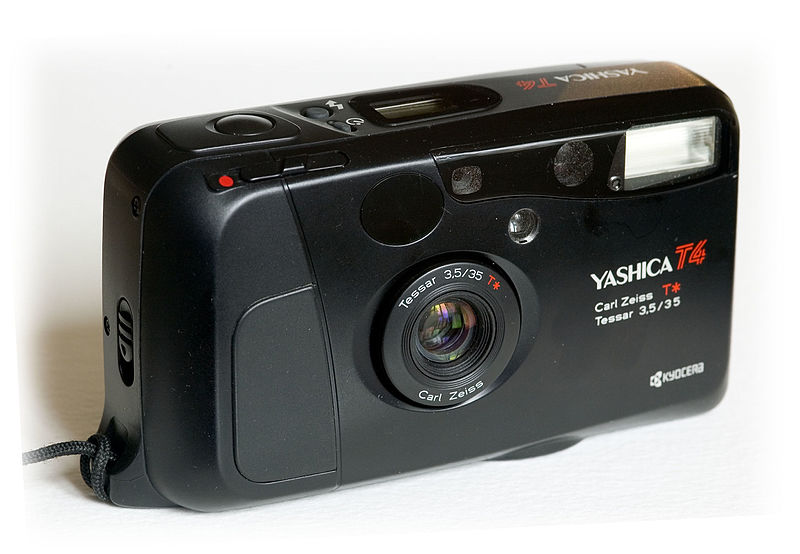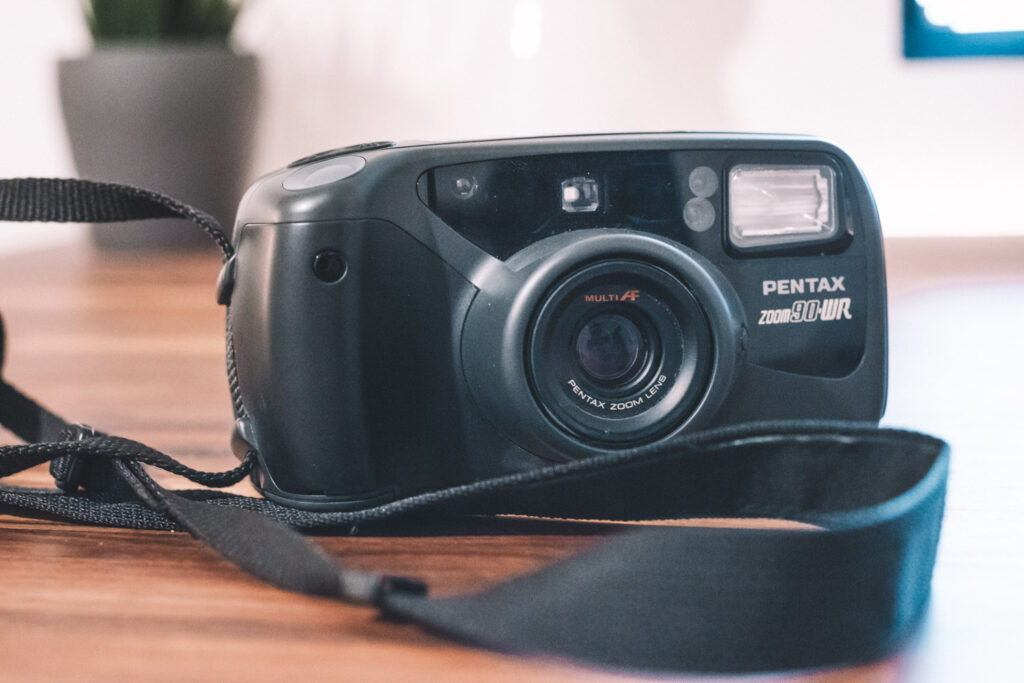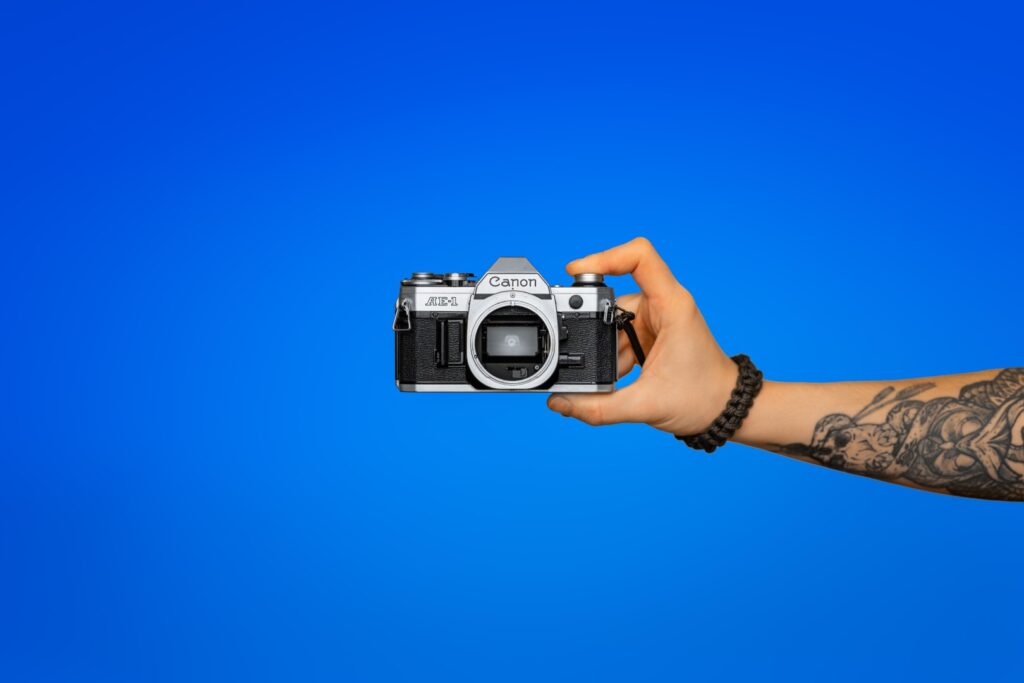The Canon AE-1 is one of the most popular film cameras ever made, and with many new photographers getting into film, we are getting asked various questions about this camera model, which we will all cover in this article.
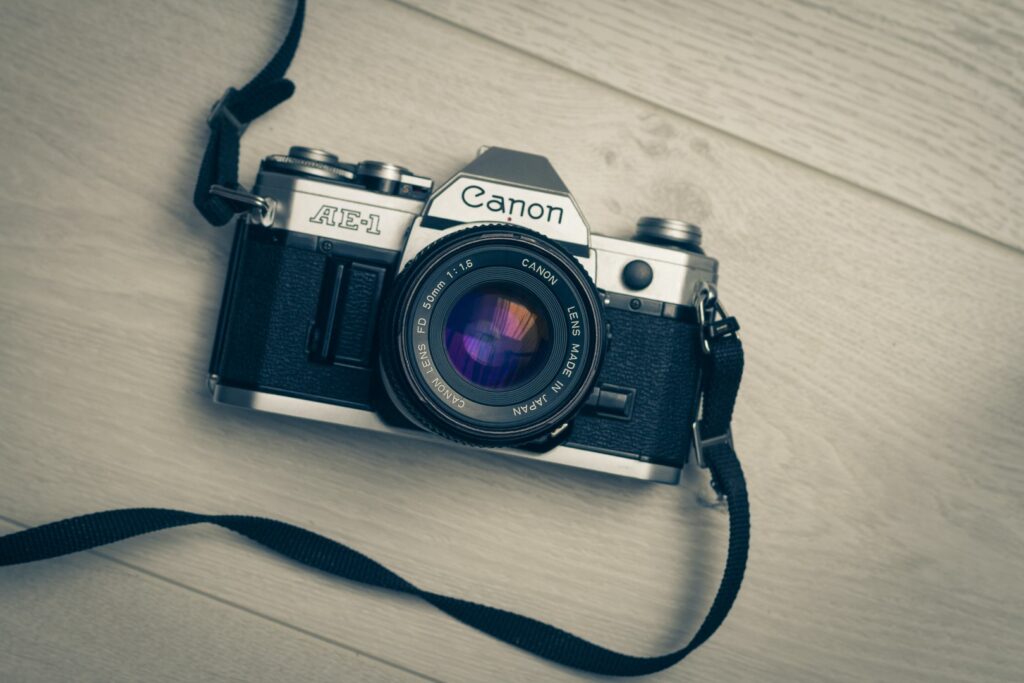
Is the Canon AE-1 a good Camera?
Yes, you are definitely not going wrong with a Canon AE-1 in terms of quality. Many photographers consider the AE-1 a great camera, it is widely used and a pretty popular classic especially among film photography enthusiasts. It features a solid construction (but has some plastic and is not as sturdy as earlier film SLRs), it’s pretty easy to use and the range of available lenses is great. It offers a shutter priority mode as well as the option to shoot fully manually. As with most cameras of this time focusing needs to be done manually.
The Canon AE-1 is known as a good camera to learn photography and especially film photography, which is also the reason it is the recommended model in many photography classes. Prices are steadily on the rise during the last few years, and many collectors as well as newly aspiring film photographers want to get their hands on an AE-1. so if you are looking for a budget pick with similar functionalities, the Canon AE-1 might not be the optimal choice.
Of course, there are also some downsides. The Canon AE-1 won’t work without a battery contrary to other film camera models, with its plasticky parts the body is also not as durable as many older full-metal bodies. The shutter speed is also capped at 1/1000 which might be a problem in very bright environments or for serious sports photography.
Related content on the Canon AE-1/Canon AE-1P:
- The Ultimate Guide to Batteries for Your Canon AE-1 Program
- How to replace the light seals of the Canon AE-1 Program
- Choosing the Best Lenses for the Canon AE1 and AE1 Program: A Comprehensive Guide
- Reviewing the Canon AE-1 Program
Is the Canon AE-1 a Point-and-Shoot Camera?
No, the Canon AE-1 would not be considered a point-and-shoot camera. Point and Shoot cameras are designed for simple operation and therefore use either focus-free lenses or autofocus. They usually have a built-in flash and automatic exposure options. Famous examples would be cameras like the Olympus Mju or the Yashica T5. To find an easy-to-use point-and-shoot camera, be sure to check out the different disposable cameras that are available on the market.
The Canon AE-1 is a single-lens reflex (SLR) camera that does, in fact, have automatic exposure options but is lacking an automatic focusing system and a built-in flash. Point-and-shoot cameras are also mirrorless in contrast to SLRs in general.
Is the Canon AE-1 hard to use?
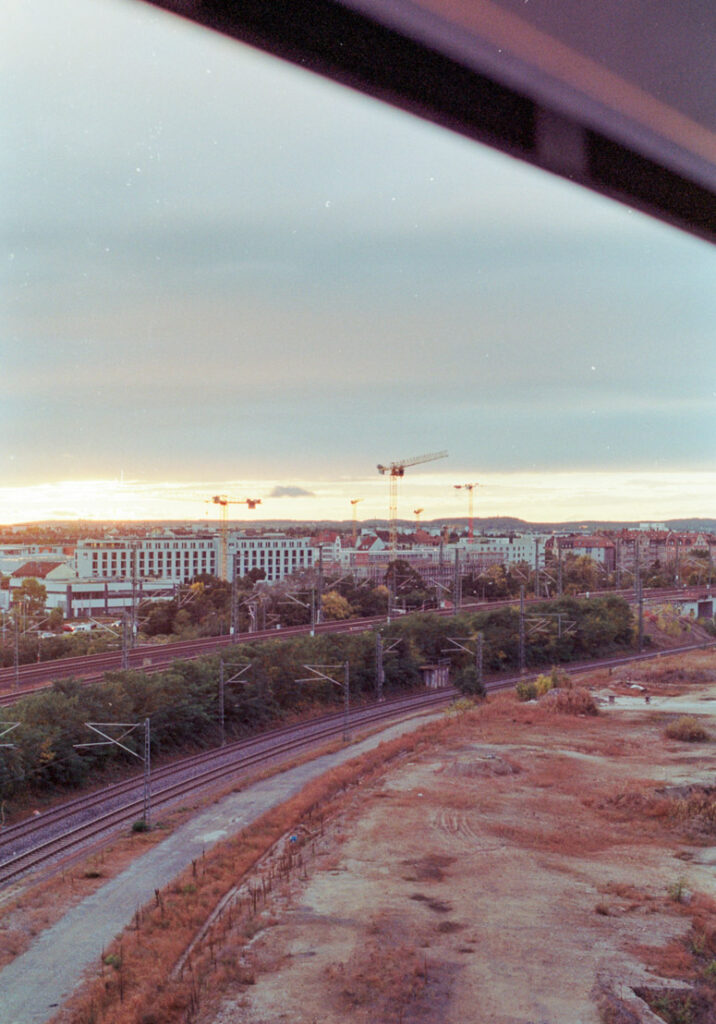
It always depends on what you compare it with. In comparison to a modern DSLM/DSLR? No, you just switch modern cameras to Auto and they will do everything for you, from focusing until exposure. But in comparison to an SLR of the same age? I would definitely say yes, it is an easy-to-use SLR. The Canon AE-1 is one of the most popular and widely used film cameras of all time for several reasons, and ease of use is definitely one of them.
For its time the controls are pretty straightforward, and the layout is simple and intuitive but you need to have a basic understanding of photography principles and techniques. Understanding the exposure triangle, depth of field, and film characteristics is definitely helpful but you can make it work without that.
It might also be interesting to know that Cameras like the Canon AE-1 or the Pentax K1000 are the most used Cameras in photography lessons due to their ease of use and availability.
Is the Canon AE-1 Manual or Automatic?
The Canon AE-1 is considered a semi-automatic camera, it features a shutter priority mode and the option to shoot fully manually. The focusing always needs to be done by hand, the camera does not have autofocus. In Shutter priority mode the photographer only has to select the shutter speed and the camera will set the aperture, in manual mode all settings have to be selected by the photographer. The successor of the Canon AE-1, the Canon AE-1 Program even features a program automatic that chooses the shutter speed as well as the aperture, so only the focusing needs to be done manually.
Is it possible to use the Canon AE-1 fully manual?
Yes, the Canon AE 1 can be used in full manual mode, but you don’t have to. It offers an automatic exposure mode with shutter priority as well, meaning you have to choose the shutter speed yourself while the aperture will be set by the camera. If you want to shoot in manual mode, just set the shutter speed and aperture by hand. In order to determine your settings take a look at the internal light meter or make use of the Sunny 16 rule.
Does the Canon AE-1 have Autofocus?
No, the Canon AE-1 does not have autofocus. Being a film camera released in 1976 it was typical to rely on manual focusing. The photographer can adjust the focus by using the focusing ring on the lens. The Canon AE-1 uses a split image focusing aid, so in order to get the object in focus, the photographer has to turn the focus ring until both images align.
What does AE stand for in the Canon AE-1?
The AE in Canon AE-1 stands for “Automatic Exposure”. The Canon AE-1 was one of the first microprocessor-controlled cameras with shutter-priority auto exposure, which was a huge selling point for Canon and it is therefore directly reflected in the name.
Is the Canon AE-1 Full Frame?
We often get the question which format the Canon AE-1 uses and whether it is full frame, and the answer to that is: Yes, the Canon AE-1 is a full-frame format camera. The term “full-frame”, which is used more for digital cameras and less for film cameras actually originates from the standard film format of 35mm film. A modern full-frame camera features an image sensor size of exactly 35 mm with an aspect ratio of 3:2 just like the “original” film format.
The Canon AE-1 being a 35 mm film format camera can therefore be considered a full-frame camera. Full frame is viewed as the gold standard for digital cameras. This makes it especially great to get if you are also shooting a full-frame DSLR/DSLM. You can use all of your affordable Canon FD lenses on you your digital camera as well. If you’re interested to know how to do that, check out our guide.
What film does the Canon AE-1 use?
The Canon AE-1 uses the standard 35 mm or also referred to as 135 mm film. It features a film gauge of 35mm and is loaded into a standardized cartridge that fits into 35 mm film cameras. With the transition to digital photography, the 35 mm film format is also referred to as “full-frame” in modern DSLRs.
Can you use any 35 mm film?
Yes, in general, you can use any type of 35 mm film in any 35 mm camera size-wise. However, to make sure you get the results that you expect you need to check that the ISO settings of your film fit the ISO settings that the Canon AE-1 is capable of.
The Canon AE-1s ISO range reaches from ISO 25 to ISO 3200, which means you’ll be able to shoot basically any film type available. Only for very specific films a higher ISO capability would be required, but if you are searching for such films this is probably not a question you would ask.
What’s the best film for the Canon AE-1?
In general, giving an answer to that question is not possible, as any kind of 35 mm film can be used in any 35 mm camera this is more up to personal preference. Keep in mind that a different lens type will usually have a lot more impact on your picture than a different film stock, especially with the capabilities of digital editing nowadays. But to help answer this question I will give a couple of recommended films in terms of quality and affordability for someone just starting out.
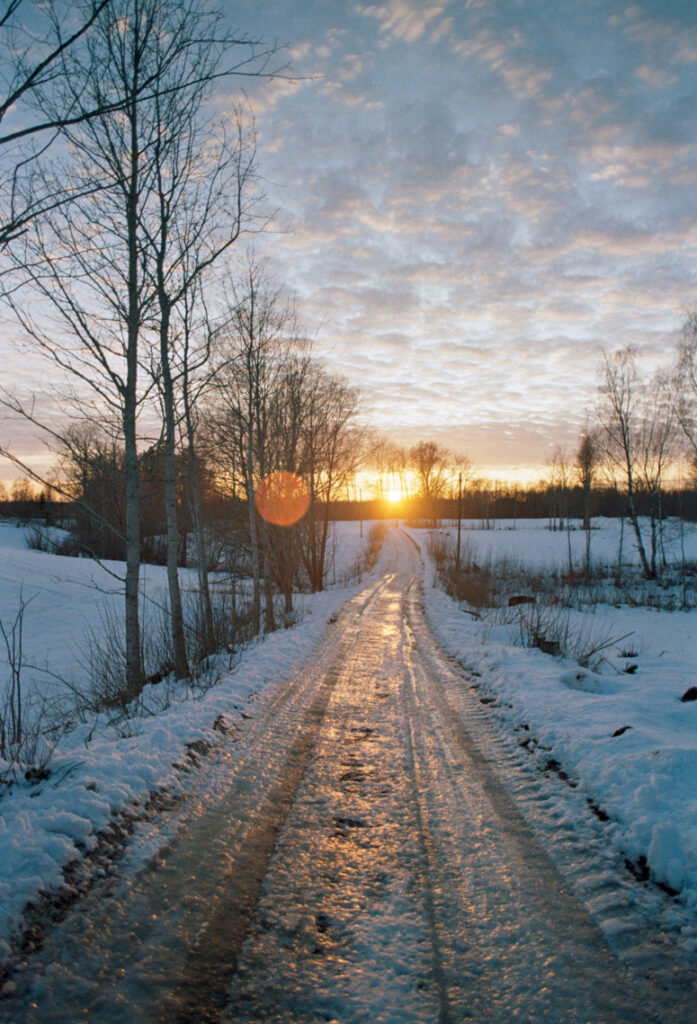
- Kodak Gold 200 (Color) – Best bang for the buck, available about everywhere, provides natural colors, and is well suited for everyday photography, also make sure to check out our review
- Kodak Portra 400 (Color) – A bit more expensive “hype” film, fine grain, very natural colors and skin tones, perfect for portrait and travel photography. Just search on Instagram or Flickr to get an impression
- Fujifilm C200 (Color) – Considered the competitor to Kodaks Gold 200 film
- Ilford HP5+ 400 (Black & White) – Well-known high-speed B/W film suited for all types of photography and features a good tonal range
- Tri-X 400 (Black & White) – Main competitor for Ilford HP5.
Just get a couple of different film stocks and see what you like best is probably the best advice here.
Is the Canon AE-1 digital?
No, the Canon AE-1 is a classic 35 mm single-lens reflex film camera. Although it features an electronically controlled shutter and won’t work without a battery it is definitely no digital camera. In case you are interested: There seem to be some digital conversions around, but the usefulness and quality are questionable.
Will the Canon AE-1 work without a battery?
No, the Canon AE-1 will not work without a battery. Since the Canon AE-1s shutter is electronically controlled it will not be possible to take pictures without battery power unlike many other cameras of this era such as the Pentax K1000. Batteries for the Canon AE-1 are easily available from Amazon.
The reason for the Canon AE-1 not working without battery power is the design choices that were made in the development. By replacing many mechanical components with electronic components, Canon was able to reduce the overall cost and automate the building process. This is to be considered one of the crucial factors for this model’s later success.
What battery does the Canon AE-1 use?
The Canon AE-1 uses either 4LR44 (Alkaline) or 4SR44 6V (Silver Oxide) batteries to power the light meter and the electronic shutter. You can find these batteries in local camera stores, bigger retailers, or online.
If possible, you should always go for a silver-oxide battery, it features more capacity and is keeping a more steady voltage which is crucial for a properly functioning light meter.
Which lenses does the Canon AE-1 use?
The Canon AE-1 can use all FD or New-FD type lenses (FDn). Originally the FD lenses were designed as breech-mount lenses but were later developed into a bayonet mount style that can attach to the “old” FD mount as well. The FD mount is not compatible with the newer Canon EF lenses. The lenses feature no electronics and the aperture is controlled by a mechanical lever. The most common focal length the AE-1 was delivered with is the standard 50mm.
Nowadays many high-quality Canon FD lenses are available at moderate prices, check out eBay or similar sites in order to get an overview. You can also use your older Canon FD lenses with your modern DSLM camera, see our guide to find out more.
How much did a Canon AE-1 cost when it came out?
When the Canon AE-1 was introduced in April 1976 the original list price for the body together with the FD 50mm f/1.4 SSC lens was 81.000 Japanese Yen which was around $280 at that time. However, over the next years, many dealers were able to offer this model at discounts of around 30%-40%. The cheap price paired with the high-end features led to the AE-1 selling over 5.7 million times, making it one of the most sold cameras of all time.
What is a good shutter speed to use on the Canon AE-1?
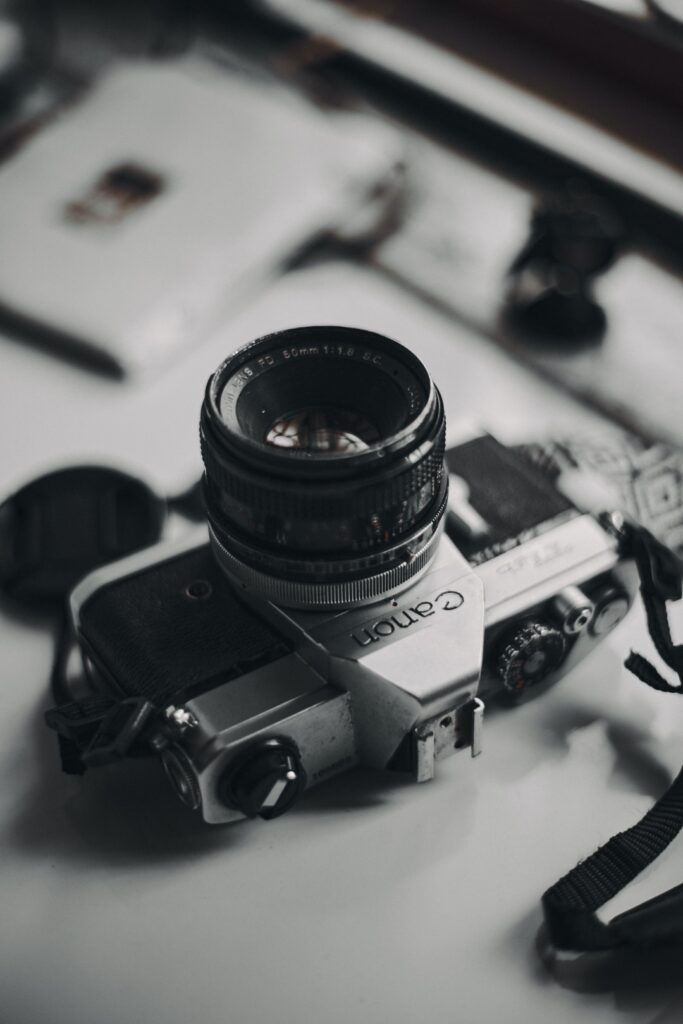
There is no “general best shutter speed” to use on the Canon AE-1 or any other camera. The shutter speed depends on the lighting conditions, the subject you are shooting, the depth of field you are aiming for, and the general desired outcome you want to achieve. The following guidelines can be considered as general tips:
- Aim to never go below 1/60th of a second as this might result in shaky and blurred pictures
- When there is not enough light and you need to set a lower shutter than 1/60, make sure to use a tripod or something similar to avoid blur
- The longer the focal length of your lens the higher should be the shutter speed, as a general rule, never use a shutter speed that is smaller than the focal length of your lens. (100mm lens = 1/125th of a second shutter speed)
- To capture moving subjects or sports a faster shutter speed of 1/250th – 1/1000th of a second is necessary to freeze the motion and avoid blur
- In case you wish to show motion and blur you need to set a very low shutter speed, depending on the subject 1/8th or 1/4th is sufficient
Remember that the right shutter speed will always depend on the individual circumstance, make sure to familiarize yourself with the exposure triangle between shutter speed, aperture, and ISO and you should be well-equipped for most situations. You can try to experiment with the different settings on a digital camera to avoid wasting film and to get direct feedback in form of a picture.
What do A, L, and S mean on the shutter button lock lever of the Canon AE-1
This is a bit of a tricky question as there is nothing to be found for the exact naming of the “A” position on any official sources or in the manual, but according to our findings here are the best answers.
- The “A” most probably stands for “Advance” and is said to be coming from older Canon rangefinder cameras, where you had to set your camera to “A” to be able to advance the film. Other sources also suggest “Automatic”
- The “L” does definitely stand for “Lock” and you should always set your camera to lock when not using it to prevent accidental firing
- The “S” stands for Selftimer, after pressing the button the self-timer lamp on the front will blink for 10 seconds before firing
Does the Canon AE-1 have a light meter?
Yes, the Canon AE-1 has a built-in light meter which helps the camera determine the correct exposure and use that information to set the correct aperture based on the chosen shutter speed. The light meter is visible when looking through the viewfinder in form of a needle that moves along a scale and indicates the correct aperture setting.
How do you read the light meter of the Canon AE-1?
As the Canon AE-1 has a shutter speed priority, the first thing you need to do is to set the shutter speed to your desired value. In case you have set your lens to “A” in order to automatically set the aperture, you can look through the viewfinder and check whether your photo will be under or over-exposed. To do so, press the shutter button halfway.
- If the needle points all the way to the red zone at the top of the scale, your picture will be overexposed. You can correct that if you select a faster shutter speed. (for example from 1/60th of a second to 1/250th of a second) The needle should go down and the camera will automatically set the aperture to the value that the meter points to.
- If the needle points to the bottom and a red light starts flashing, the picture will be underexposed. To correct that select a slower shutter speed until the red light stops blinking. The camera will set the aperture to the value that the meter points to when firing.
In case you are shooting in manual mode and want to select your aperture by hand, you can choose your shutter speed and the needle will point to the suggested aperture value. This function is pretty helpful especially if you want to slightly over or underexpose your picture. Just set the aperture one or two stops below the suggested value and you are good to go.
What does a flashing “M” symbol in the viewfinder of my Canon AE-1 mean?
The Canon AE-1 features a shutter priority mode, which means the camera will automatically set the aperture based on your chosen shutter. For this mode to work, you need to set your Canon FD lens to “A” on the aperture ring and it will automatically set the aperture. In case you do not use this mode and set the aperture by hand, the camera will show you a flashing “M” symbol in order to visually remind you that it is in manual mode and that you are responsible for setting the aperture and shutter speed for proper exposure.

